|
by Marla White You have an idea for what you know is a sure fire hit for a comedy. Through hard work and some luck, you get the golden opportunity to pitch it to an executive. Maybe they even laugh at the logline – huzzah! Then they ask you The Question: “So is this a multi-cam or single cam?” The trickle of sweat down your back turns into a river. Execs are looking for reasons to say “no” - what if you pick the wrong format? So you figure you’ll play it safe and say, “It can be either one.” Worst. Answer. Ever. And yet I hear it time and time again, particularly from young comedy writers. Yes, it’s important to be flexible as a general rule, but in that moment the exec is looking for your specific vision for the show. Here’s the thing – you need to know the answer to that question long before you get in the room. You need to know what type of comedy you want to make before you write the first draft of your pilot. So what’s the difference? The basic answer is that multi-cam comedies such as “Will & Grace” and “Big Bang Theory” are shot in one day with multiple cameras in front of a live audience and use a laugh track when they air. Single cams like “Young Sheldon” and “The Middle” are typically shot with one camera on closed sets over a number of days and don’t have recorded laughter. Additionally, in recent years the hybrid – a combination of both shooting in front of a live audience and doing some shots outside the stage setting - have popped up, such as “How I Met Your Mother.” But to understand which format is better for the story you want to tell, you need to dig deeper than just how it’s shot. The 3 Questions to Ask Yourself Before You Write You Comedy Pilot or Pitch What is the tone of the show I want to make? For broadcast TV, basically it’s warm and fuzzy vs. the joke fest. I’ve talked to writers who’ve worked on single camera comedies and they’ve sacrificed a joke at the end of the show to make time for the warm fuzzy moment that is the hallmark of the single cam comedy. Not that kind of Hallmark; warm fuzzy doesn’t mean soft or predictable, it means a bit more grounded with an optimistic beat at the end. Single cam comedies on other outlets like HBO or Hulu tend to be dry, sarcastic and usually have a serialized storyline instead of episodic ones, but that’s a whole other blog post. Multi-cams tend to focus more on a constant flow of jokes and less worried about making the audience feel good and having the problem of the week working out for the characters. The jokes are broader and the characters will make fun of anything and anyone. Fat jokes, girl scouts, penis jokes, bathroom issues, girl scouts with bathroom issues – nothing is out of bounds. There’s an ugly misconception by some people that multi-cams are dumbed-down to appeal to the masses while single cams are more sophisticated. I don’t believe this to necessarily be the case. Multi-cams like “Murphy Brown” and “Will & Grace” (back once again) are smart, fearless shows that often deal with topical issues. When both shows first aired they proved to be the training ground for many of today’s successful show runners. What kind of pacing best serves my story 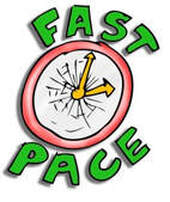 Multi-cams tend to be faster paced, focusing on moving quickly from one joke to the next. Part of this comes from the energy derived from performing in front of a live audience. Laughter from a crowd generates the kind of energy an actor doesn’t get from the quiet of a set. But the energy flow goes both ways; a live audience demands constant entertainment so the jokes need to come pretty quickly to keep the laughs going. If you’ve ever been to a taping of a show, you know it involves waiting in line and then more waiting in your seat for hours, not just the thirty minutes it takes to watch the show at home. It can be boring and dull, so writers have to come up with quick, punchy jokes to reward the fans and keep them laughing. 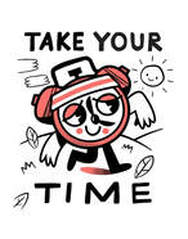 Because they don’t rely on a studio audience’s reaction, single cams don’t have to have a constant barrage of jokes to be successful. Their stories can take time to build and can explore bigger topics without fear of a lull between laughs. Since they shoot the same scenes over and over from different angles, it would be almost impossible to keep up the same frenetic pace actors on a multi-cam can sustain. The actors and writers don’t get the instant feedback of laughter from an audience that confirms each episode is as funny as the last; they simply have to believe in their own material. How many locations does my series require? Shooting in front of a live audience restricts the number of sets a multi-cam can use to one to two locations per episode typically. That’s why workplace comedies are well suited to be multi-cams since your story takes place in an office or in the case of “Superior Donuts,” a donut shop. Family comedies like “Roseanne” where all the action takes place in the home are another example of natural places for a multi-cam to thrive. Multi-cams can use inserts of pre-recorded footage of a baby or an animal, for instance, that can’t be relied on to perform in front of a live audience, but for the most part they are recorded in a studio sound stage. If you have to rely on a lot of inserts it can make the show feel uneven and just plain weird, something to consider carefully when choosing the format. Single cams have the freedom to use multiple locations in the stories they tell. In “Speechless” the stories often take the characters out into the world such as taking a tour of a college, going on vacation, going out to a restaurant or laying on the grass at the end of the airport runway. And yes, it’s likely most of these are sets and not actual locations, but without the hassle of making room for a live audience they’re able to use several sets in a single story. There’s also a show like “Gaffigan,” where the intent was for New York City to be as much of a character in the show as any of the people. It was important to go out into the parks and streets of New York to inform the lives of the characters. If your comedy series idea relies on the vibe of the specific place where it’s set to be funny, then it will probably have to be a single cam. Weigh all of these factors carefully as your idea evolves into a pitch or script. The format you choose will affect the stories you want to tell and even the characters that populate your world. And then remain open to changing it if a network wants to buy your idea but is desperate for a particular format for their line up.  If you decide to write it on spec, be sure to use the proper script format so the person reading it knows from page one if you mean for your show to be a single or multi-cam. Programs like Final Draft have a template for you to follow. If your script looks like a single cam – it’s single spaced and around 35 pages long – the reader expects a grounded story that builds slowly. They’ll be quickly disappointed if there are two jokes a page and most of them involving poop because it defies their expectation. That’s not the kind of unexpected turn you want to give a reader. P.S. – it also gives away the fact that you are ignorant of the difference and probably not someone they want to work with. 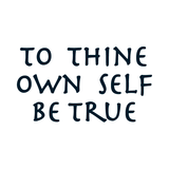 Bottom line: don’t chase a format because you think it’s what’s selling. As soon as some idiot declares multi-cams are dead a juggernaut like “Will & Grace” comes back on the air and suddenly everyone wants the next big multi-cam. Figure out the kind of stories you want to tell and which format will serve it. If it’s funny, they will buy it. Do you have an idea for a TV series but need help shaping it into a pitch or a spec script? Contact me for a one-on-one consultation to get your story and characters on the right track.
1 Comment
|
Marla WhiteCoaching writers who are ready to bring their pitch or script to the next level. Archives
September 2023
Categories |
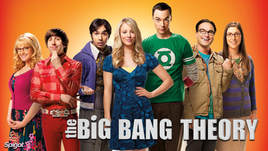
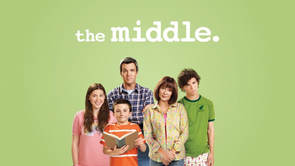

 RSS Feed
RSS Feed